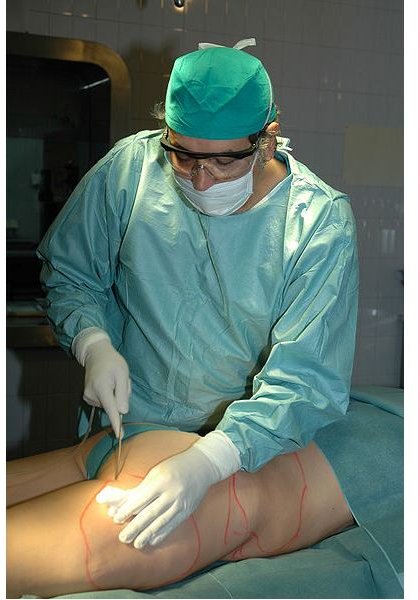Liposuction Surgery Guide: What You Need to Know Before Going Under the Knife
Liposuction surgery is a cosmetic procedure that can be done to shape parts of the body by removing some excess fat. This procedure will not remove cellulite, but some excess fat in areas, such as the abdomen, buttocks, hips, and thighs. Though this procedure is common and relatively simple, it is not for everyone. Before deciding to have this procedure, all patients should carefully weigh the risks versus benefits to determine if it is right for them.
Are You a Good Candidate for This Surgery?
Not everyone is a good candidate. Patients must be realistic with their expectations of the outcome and have some basic qualities, including:
- Firm, elastic skin
- Concentrated fat pockets that are not responding to exercise and a healthy diet
- Average weight or be just slightly overweight
- Be in good overall health
Preparing for This Surgery
Before going in for this surgery, there are several things that need to be done to prepare. First, a consultation with the patient’s surgeon is necessary. During this consultation, the surgeon will discuss all possible options, the possible risks, what to expect during recovery, how the procedure is done, will discuss cost, what the patient can expect, and the surgeon will evaluate the patient’s skin type. Once the consultation is done and the patient is deemed a good candidate for this procedure, the patient will be provided with a list of instructions to follow to prepare themselves for surgery. Some testing is also done, such as blood testing. Blood testing, such as an ESR blood test, is done to ensure the patient is healthy and to evaluate their risk. They will be told what to avoid, such as medications, supplements, vitamins, and foods, will have their allergies evaluated, and will be told how to come to the surgical center the day of their procedure.
How is This Procedure Done?
The procedure may be done as an outpatient procedure or the patient may need to stay overnight depending on the type of liposuction they are having. The type of anesthesia used will also depend on the type of liposuction surgery being performed. Some patients will be “put to sleep” with general anesthesia, while others will be given local anesthesia which numbs a specific area and will remain awake, but will often be given an intravenous sedative to help them relax.
Once the patient has been anesthetized, the area being worked on is thoroughly cleaned and the procedure begins. The doctor will insert the cannula (the device that “sucks" out the fat) into predetermined areas on the patient through small incisions that are carefully chosen. The cannula will be moved in and out between the muscle and fatty areas of the skin to remove the excess fat. The excess fat is deposited into a large syringe or suction pump container, depending on the type of procedure the patient is having. How much fat is being removed will determine how long the surgery takes. The small incisions will then be closed with sutures or steri-strips.
Types of Liposuction
There are two main types of liposuction, including:
- Ultrasound-assisted liposuction: During this type, the fat being removed is first liquefied using ultrasonic energy.
- Tumescent liposuction: This type is geared at reducing blood loss and reducing pain during and after the procedure. A solution made up of a mild painkiller, saline solution, and epinephrine is injected into the fatty areas prior to fat removal.
Liposuction Recovery and Risks
Recovery is typically quick for patients who have an outpatient procedure. Most patients will return to normal activities in about two weeks and be back to work within a few days. The more fat that is removed, the longer it will take most patients to fully recover. Patients will typically experience swelling, bruising, and soreness for a few weeks following liposuction. There are some risks with this procedure as well, though, this procedure is relatively safe for most patients as long as their surgeon is board certified and specially trained, and the facility is clean and up to code. Risks can include skin discoloration and infection.
Resources
WebMD. (2010). Cosmetic Procedures and Liposuction. Retrieved on August 2, 2010 from WebMD: https://www.webmd.com/skin-beauty/guide/cosmetic-procedure-liposuction
American Society of Plastic Surgeons. (2010). Liposuction for Women. Retrieved on August 2, 2010 from ASPS: https://www.plasticsurgery.org/Patients_and_Consumers/Procedures/Cosmetic_Procedures/Liposuction_for_Women.html
Image Credits
Liposuction Surgery: Clinica Planas – Wikimedia Commons
